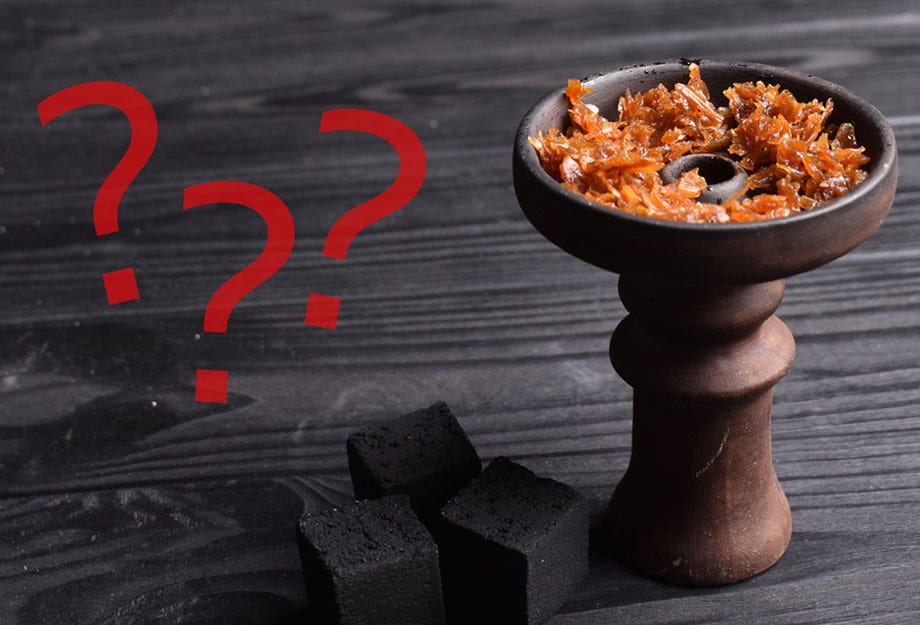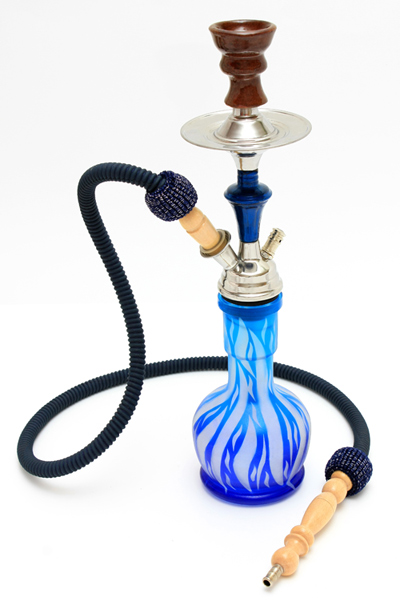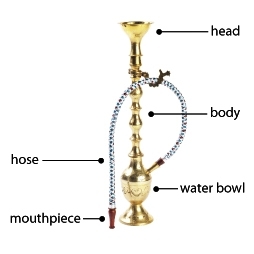Introduction

Shisha tobacco, also known as hookah tobacco, has gained immense popularity in recent years, especially among younger generations. It offers a unique smoking experience, with a variety of flavors and aromas to choose from. However, it is important to understand the composition of shisha tobacco and its potential implications on health and safety. By delving into the ingredients and additives used in shisha tobacco, we can better understand its effects on the body and make informed decisions about its consumption. This article aims to provide a comprehensive understanding of the composition of shisha tobacco and its significance in the realm of smoking.
Background On Shisha Tobacco And Its Popularity
Shisha tobacco, also known as hookah tobacco, has experienced a surge in popularity, particularly among younger demographics, in recent years. Its appeal lies in its unique smoking experience, which involves the use of a water pipe and a variety of flavored tobacco options. Shisha tobacco has become a social activity, often enjoyed in lounges and cafes with friends. Its popularity can be attributed to its exotic flavors, smooth smoke, and the social element it brings. However, it is important to understand the composition of shisha tobacco and its potential health implications before partaking in this trend.
Importance Of Understanding The Composition Of Shisha Tobacco
Understanding the composition of shisha tobacco is crucial for individuals who are considering or currently engaging in its consumption. By knowing the ingredients and additives present in shisha tobacco, individuals can make informed decisions about their health and well-being. It allows them to be aware of any potential risks or adverse effects associated with smoking shisha tobacco. Additionally, understanding the composition can help regulators and policymakers develop appropriate guidelines and regulations to ensure the safety and quality of shisha tobacco products. Overall, knowledge about the composition of shisha tobacco promotes responsible and informed use of this popular smoking trend.
What Is Shisha Tobacco?

Shisha tobacco, also known as hookah tobacco, is a type of tobacco product that is commonly used in water pipe smoking. It is a mixture of tobacco leaves, sweeteners, and flavorings. Shisha tobacco is often infused with fruit flavors, such as apple, strawberry, or mint, to enhance its taste. Unlike cigarette tobacco, which is typically dry and finely cut, shisha tobacco is moist and sticky. When heated, it produces smoke that is inhaled through a hookah device. Shisha tobacco is popular in many parts of the world as a social and recreational activity.
Overview Of Shisha Tobacco And Its Components
Shisha tobacco, also known as hookah tobacco, is a popular form of tobacco used in water pipe smoking. It is a mixture of tobacco leaves, sweeteners, and flavorings. The sweeteners are typically honey or molasses, which give the tobacco a pleasant taste and aroma. Flavorings can range from fruits such as apple or strawberry to spices like mint or cinnamon. These components work together to create the distinctive flavors enjoyed by shisha tobacco enthusiasts. It is important to understand the composition of shisha tobacco in order to better appreciate its flavors and make informed choices about its consumption.
Understanding The Difference Between Shisha Tobacco And Cigarette Tobacco
Shisha tobacco and cigarette tobacco may both contain nicotine, but there are significant differences between the two.
- Preparation: Shisha tobacco is specially prepared and heated in a water pipe, while cigarette tobacco is typically rolled into cigarettes for direct smoking.
- Ingredients: Shisha tobacco often contains sweeteners like honey or molasses and flavorings such as fruits or spices, giving it a pleasant aroma and taste. Cigarette tobacco, on the other hand, may have additives and chemicals for flavor enhancement.
- Consumption: Shisha tobacco is usually smoked in a social setting, with multiple users sharing the same pipe, whereas cigarette smoking is more commonly used for individual consumption.
It’s important to recognize these distinctions when making decisions about smoking and to be aware of the potential health risks associated with each form of tobacco use.
The Composition Of Shisha Tobacco

Shisha tobacco is composed of various ingredients that contribute to its distinctive taste and aroma. The main component of shisha tobacco is tobacco leaf, with different types used depending on the desired strength and flavor. Oriental, Burley, and Virginia are common tobacco leaf varieties used in shisha tobacco production. In addition to tobacco, shisha tobacco may also contain flavorings such as fruits or spices, as well as sweeteners like honey or molasses. These ingredients work together to create the enjoyable smoking experience that shisha tobacco is known for.
Main Ingredients Found In Shisha Tobacco
The main ingredients found in shisha tobacco include tobacco leaf, flavorings, and sweeteners. Different types of tobacco leaf, such as Oriental, Burley, and Virginia, are used to achieve various strengths and flavors. These tobacco leaves are carefully selected and blended to create the desired smoking experience. Flavorings, such as fruits or spices, are added to enhance the taste and aroma of the tobacco. Sweeteners like honey or molasses are also commonly used to provide a smooth and enjoyable smoking experience. These ingredients work together to create the distinctive flavor and aroma that shisha tobacco is known for.
Additives And Flavorings Used In Shisha Tobacco
Additives and flavorings play a crucial role in enhancing the taste and aroma of shisha tobacco. These additions help to create a wide range of flavors, from fruity to spicy, catering to diverse preferences. Common additives include fruits like apple, cherry, and mango, as well as spices like mint and cinnamon. Additionally, sweeteners like honey or molasses are used to provide a smooth and enjoyable smoking experience. These additives and flavorings are carefully selected and blended to create unique and enticing flavors that make shisha tobacco a popular choice among smokers.
Impact On Health

Smoking shisha tobacco can have a significant impact on health. The smoke produced during a shisha session contains carbon monoxide and other harmful substances that can increase the risk of smoking-related illnesses, including cancer, heart disease, and lung disease. Research has shown that shisha smoke can be just as damaging to health as cigarette smoke, if not more. It is important for individuals to be aware of the potential health risks associated with shisha tobacco and make informed decisions about their consumption. Regular health education and awareness campaigns are necessary to promote a better understanding of the impact of shisha tobacco on health.
Health Risks Associated With Smoking Shisha Tobacco
Smoking shisha tobacco can have a significant impact on health. The smoke produced during a shisha session contains carbon monoxide and other harmful substances that can increase the risk of smoking-related illnesses, including cancer, heart disease, and lung disease. Research has shown that shisha smoke can be just as damaging to health as cigarette smoke, if not more. It is important for individuals to be aware of the potential health risks associated with shisha tobacco and make informed decisions about their consumption. Regular health education and awareness campaigns are necessary to promote a better understanding of the impact of shisha tobacco on health.
Comparing The Risks Of Shisha Tobacco To Cigarette Smoking
Research has shown that smoking shisha tobacco can be just as damaging to health as cigarette smoking, if not more. The smoke produced during a shisha session contains harmful substances that can increase the risk of smoking-related illnesses such as cancer, heart disease, and lung disease. In fact, a study found that people who smoke both shisha and cigarettes experience worse health effects compared to those who smoke only cigarettes. It is important for individuals to understand that shisha tobacco poses similar health risks as cigarette smoking and to make informed decisions about their tobacco consumption.
Regulation And Safety

Regulation and Safety:
There are regulatory standards and guidelines in place for the production of shisha tobacco to ensure consumer safety. These regulations may vary depending on the country or region. It is important for shisha tobacco manufacturers to adhere to these standards regarding the composition, labeling, packaging, and advertising of their products. Additionally, safety measures and quality control practices are implemented to minimize potential health risks associated with shisha tobacco use. These measures include monitoring for contaminants, testing for harmful substances, and implementing proper manufacturing processes. By following these regulations and safety practices, the aim is to protect consumers and minimize the health risks associated with shisha tobacco consumption.
Regulatory Standards And Guidelines For Shisha Tobacco Production
Regulatory standards and guidelines are in place for the production of shisha tobacco to ensure consumer safety. These standards may vary depending on the country or region, but they typically cover aspects such as the composition, labeling, packaging, and advertising of shisha tobacco products. The Food and Drug Administration (FDA) in the United States, for example, regulates the manufacture, import, packaging, labeling, advertising, and distribution of hookah tobacco. These regulations aim to protect consumers by ensuring that shisha tobacco products meet certain quality and safety standards.
Safety Measures And Quality Control Practices
Safety measures and quality control practices are essential in the production of shisha tobacco to ensure consumer safety. Manufacturers typically have rigorous processes in place to monitor and control the quality of their products. This includes conducting regular testing for harmful substances, such as heavy metals and toxic compounds, as well as ensuring compliance with regulatory standards. Additionally, manufacturers may implement measures to maintain hygiene and cleanliness during the manufacturing process, such as proper handling and storage of ingredients. By adhering to these safety measures and quality control practices, manufacturers can ensure that their shisha tobacco products meet the necessary standards for consumer use.
Conclusion

In conclusion, understanding the composition of shisha tobacco is crucial for individuals who engage in its consumption. By knowing the ingredients and additives present in shisha tobacco, individuals can make more informed decisions about their health. It is evident that smoking shisha tobacco poses health risks, similar to that of cigarette smoking. Therefore, it is important to consider the potential consequences and make responsible choices regarding shisha tobacco consumption. Adhering to regulatory standards and implementing safety measures during production are vital for ensuring the quality and safety of shisha tobacco products. Ultimately, individuals should prioritize their health and well-being when deciding whether or not to use shisha tobacco.
Understanding The Composition Of Shisha Tobacco And Its Implications
Understanding the composition of shisha tobacco is crucial for individuals who engage in its consumption. By knowing the ingredients and additives present in shisha tobacco, individuals can make more informed decisions about their health. It is evident that smoking shisha tobacco poses health risks, similar to that of cigarette smoking. Therefore, it is important to consider the potential consequences and make responsible choices regarding shisha tobacco consumption. Adhering to regulatory standards and implementing safety measures during production are vital for ensuring the quality and safety of shisha tobacco products. Ultimately, individuals should prioritize their health and well-being when deciding whether or not to use shisha tobacco.
Importance Of Informed Decision-making Regarding Shisha Tobacco Consumption
Informed decision-making is crucial when it comes to shisha tobacco consumption. Understanding the composition and health risks associated with shisha tobacco can help individuals make informed choices about their well-being. By being aware of the potential consequences, individuals can weigh the risks and benefits and decide whether or not to use shisha tobacco. Being informed also allows individuals to take necessary precautions and implement harm reduction strategies if they choose to engage in shisha smoking. Ultimately, prioritizing one’s health and making responsible decisions is paramount when it comes to shisha tobacco consumption.
Frequently Asked Questions about Shisha Tobacco
Q: What is shisha tobacco?
A: Shisha tobacco, also known as hookah or waterpipe tobacco, is a specific type of tobacco that is commonly used for smoking in a hookah pipe. It is a flavored tobacco product that is enjoyed by many cultures around the world.
Q: How is shisha tobacco different from regular tobacco?
A: Shisha tobacco is typically blended with molasses or honey and is infused with various flavors such as fruits, spices, or even chocolate. It is designed to provide a smooth and flavorful smoking experience. Regular tobacco, on the other hand, is usually not flavored and is primarily used in cigarettes or cigars.
Q: How is shisha tobacco smoked?
A: Shisha tobacco is traditionally smoked using a hookah or waterpipe. The tobacco is placed in a bowl at the top of the hookah, covered with aluminum foil, and heated using charcoal. When the smoker inhales through the mouthpiece, the smoke is drawn down through the water in the base of the hookah, cooling and filtering it before it is inhaled.
Q: Is shisha tobacco addictive?
A: Shisha tobacco contains nicotine, which is a highly addictive substance. Therefore, regular and prolonged use of shisha tobacco can lead to nicotine addiction. It is important to use shisha tobacco responsibly and in moderation.
Q: Is smoking shisha tobacco harmful to health?
A: While smoking shisha tobacco poses certain risks to health, it is important to note that the level of harm greatly depends on the frequency and duration of use. The smoke from the hookah contains harmful chemicals and toxins, including carbon monoxide and heavy metals. It can contribute to various health problems such as lung and heart diseases, oral health issues, and can even increase the risk of certain types of cancer.
Q: Can shisha tobacco be enjoyed without the health risks associated with smoking?
A: Yes, there are alternatives to smoking shisha tobacco that can reduce the health risks. Some individuals opt for nicotine-free herbal or tobacco-free steam stones that can be used in a hookah pipe. These options provide a similar smoking experience without the nicotine and harmful chemicals found in traditional shisha tobacco.
Q: Is shisha tobacco legal?
A: The legality of shisha tobacco varies from country to country. It is important to check the local laws and regulations regarding the sale and use of shisha tobacco in your specific region before purchasing or using it.
Q: Can you smoke shisha tobacco if you are pregnant or breastfeeding?
A: It is strongly advised for pregnant women and breastfeeding mothers to avoid smoking any type of tobacco, including shisha tobacco. The harmful chemicals and toxins present in the smoke can be detrimental to the health and development of the baby.
Q: How can I ensure a safe and enjoyable shisha smoking experience?
A: To ensure a safe and enjoyable shisha experience, it is important to use high-quality shisha tobacco, maintain clean and well-maintained hookah equipment, and monitor the duration and frequency of use. It is also recommended to smoke in well-ventilated areas and to stay hydrated while smoking. Additionally, practicing moderation and being mindful of the potential health risks associated with smoking are key factors in enjoying a responsible shisha experience.

Bites ‘N’ Pipes is a hookah lounge with a full bar and fabulous food. Come relax and hang with friends in a chill place. We are featuring everything you need for a good time. We have it all: WiFi, streaming your own music, foosball, comfy couches, delicious food, a pool table, great drinks, and sensational hookah. Plus, smoke anywhere! Bites’ N’ Pipes is the place for a low-key party or hanging out low-key. Check out our food menu and hookah flavors from the links above. Come make memories with us!